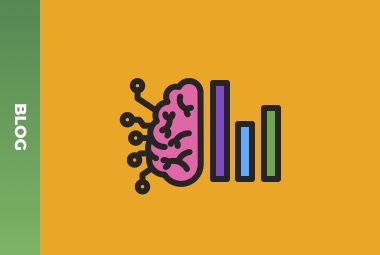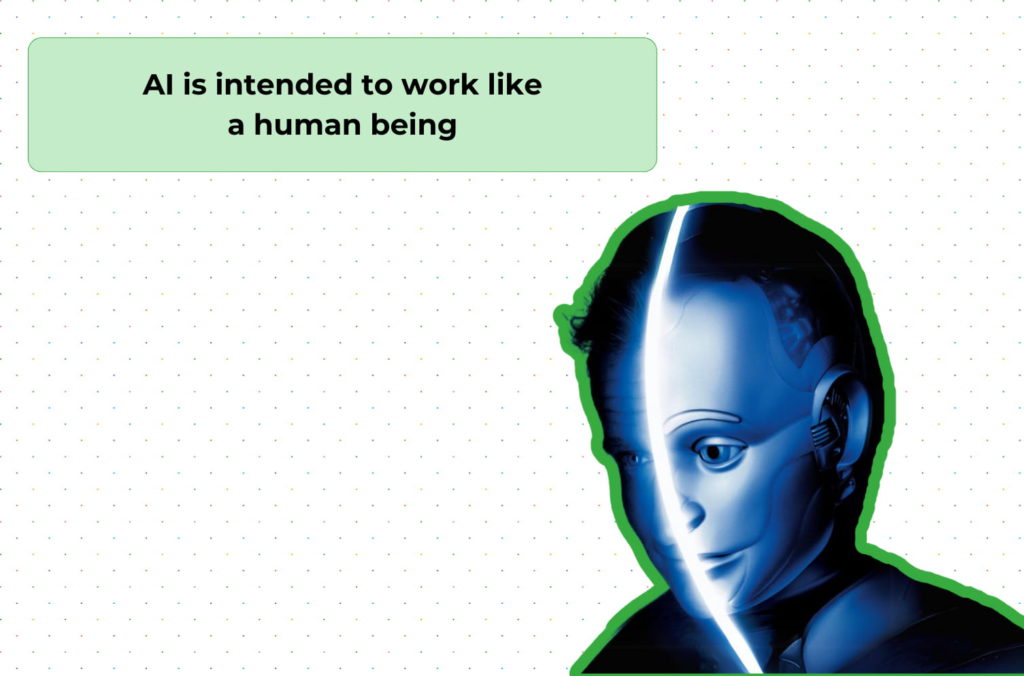Business intelligence and artificial intelligence: difference and use

As technology continues to advance at a rapid pace, businesses are constantly seeking new approaches to gain a competitive edge. This has led to the growing significance of Business Intelligence (BI) and Artificial Intelligence (AI) in the modern world. BI and AI have revolutionized the way companies gather, analyze, and utilize data, providing valuable insights and predictions. From enhancing decision-making processes to uncovering hidden patterns in data, the intersection of BI and AI is shaping the future of business strategy, and innovation.
Some interesting figures: According to Forbes Advisor, in 2022, the global AI adoption rate was 35%. As of 2023, the global BI adoption rate is stuck at about 26% pursuant to statistics from DataProt. This means one-third of companies are into digital transformation with AI prevailing in this race to the future.

Understanding the distinctions and harnessing the collective power of these technologies is not merely a choice but a strategic imperative for businesses aiming to thrive in the dynamic and competitive global marketplace. This article is dedicated to making it clear about BI and AI, exploring their differences and, more importantly, their synergistic applications.
What is Business Intelligence? How can you use it?
Business Intelligence (BI) refers to the use of technology, processes, and tools to collect, analyze, and present business information in a way that supports better decision-making. The primary goal of business intelligence is to transform raw data into meaningful insights to make informed and strategic decisions.

Key components of BI include data warehousing, data integration, data mining, reporting, visualization, performance management, predictive analytics, data governance and security, etc. This can help you, inter alia:
- centralize your data storage in a data warehouse,
- combine data from different sources,
- identify bottlenecks, trends, dependencies, and relationships within large datasets,
- present complex data in a visual format,
- monitor, measure, and manage key performance indicators,
- use statistical algorithms to predict outcomes, or
- establish policies, processes, and controls to ensure data quality, integrity, and security.
Check out more about how you can gain with our BI & data analytics service to empower your business with data-driven insights.
BI tools for data visualization
As mentioned above, BI is about gathering and analyzing data from various sources, including internal databases, external data sets, and historical records. This data is processed and transformed into actionable information, often presented through reports, dashboards, and visualizations. BI tools enable users to explore patterns, drawbacks, and extract valuable insights, facilitating a deeper understanding of business performance, market dynamics, and customer behaviors.
BI tools streamline data collection, processing, and analysis, fostering operational efficiency. Automation of repetitive tasks, real-time monitoring of key performance indicators (KPIs), and rapid access to actionable insights contribute to smoother and more efficient business processes. To see more about data visualization and tips, you can here in our previous article.
BI reporting for real-time monitoring
One more thing we’d like to pay attention to is BI reporting, which stands for the generation and dissemination of reports based on analyzed data. Using open-source bi tools, interactive dashboards, visualizations, you can create and distribute reports summarizing key performance indicators (KPIs) and other relevant metrics to make real-time data updates. This component of the BI stack allows stakeholders to monitor performance and communicates insights across the organization. So, there won’t be more dynamic and responsive application of BI than BI reporting.
Importance of business intelligence for decision-making
Every business starts with an idea. When it is already running, you have to fill it up with good ideas to keep it going. If you want to be the leader in your industry, it is supposed to implement the best creative solutions. All of that can be achieved with the help of business intelligence. This is such an important thing. BI just empowers with the ability to make timely, data-driven decisions that contribute to efficiency, competitiveness, and overall business growth. The choice is yours whether to apply it, our job is to keep you informed.
What is AI? How Artificial Intelligence is used?
All of us shall admit that Artificial Intelligence came into our lives and struck its roots deep. It just will be around with us like cryptocurrency whether we want to or not. The global artificial intelligence market size was valued at $136.55 billion in 2022. Top-notch businesses and innovators invest so much therein. So, what does it mean and what is it like?

Artificial Intelligence (AI) is a transformative field of computer science that focuses on developing systems and technologies capable of performing tasks that traditionally require human intelligence. AI systems are designed to simulate cognitive functions such as learning, reasoning, problem-solving, perception, and language understanding. Are you following? AI is intended to work as if it is a human being. Sounds breathtaking, we know.
The application of Artificial Intelligence is vast and diverse, encompassing numerous domains. One of the prominent uses of AI shall be:
- in natural language processing (NLP), where machines are trained to understand, interpret, and generate human-like language.
- in machine learning, which enables systems to learn and improve from experience without being explicitly programmed.
This is particularly powerful in predictive analytics, where algorithms can analyze data patterns to make predictions and recommendations. In industries such as finance, healthcare, and marketing, machine learning is utilized for fraud detection, personalized medicine, and targeted advertising.
Some more interesting figures of AI application: according to the said survey by Forbes Advisor, 56% of respondents use AI for customer service, 51% of businesses – for cybersecurity and fraud management, customer relationship management (46%), digital personal assistants (47%), inventory management (40%) and content production (35%), product recommendations (33%), accounting (30%), supply chain operations (30%), and audience segmentation (24%).
As we see, It’s quite a practical implementation of digital technologies and a solid contribution to business growth. Find out more about how your business can take advantage of Artificial Intelligence with our AI transformation service.
BI vs AI: differences
Since BI and AI are often confused, we prepared a comparison for you to understand their differences on the merits.

- Purpose and focus
BI: focused on reporting, analyzing historical data, and generating insights to support informed decision-making. Its goal is to provide a clear understanding of past and present business performance.
AI: designed to perform tasks that traditionally require human intelligence, such as learning from data, recognizing patterns, making predictions, and automating decision-making processes.
- Functionality
BI: reporting tools, dashboards, and data visualization techniques
AI: machine learning, deep learning, natural language processing, neural network, robotics, computer vision
- Data processing and complexity
BI: deals with structured data and uses predefined queries and reports. It is well-suited for straightforward analyses and reporting
AI: can handle both structured and unstructured data, making it suitable for more complex tasks, uncovering patterns in diverse datasets, including textual, visual, and auditory information
- Scope of tasks
BI: well-suited for descriptive analytics, summarizing what has happened and what is currently happening in the business. It provides a foundation for understanding trends and performance
AI: is capable of predictive and prescriptive analytics. It can predict future trends, recommend actions, and optimize processes based on learned patterns
- Use cases
BI: performance reporting, data visualization, trend analysis, and monitoring key performance indicators (KPIs)
AI: predictive analytics, demand forecasting, customer segmentation, NLP for customer interactions, and automation of repetitive tasks
- Time horizon
BI: retrospective, emphasizing the analysis of historical data to uncover trends and patterns. It provides a snapshot of what has happened and what is currently happening.
AI: forward-looking perspective. It can analyze historical data to make predictions about future trends, outcomes, or customer behaviors.
Why is it better to use BI and AI together?
Given AI and BI are interrelated, combining them will create a symbiotic relationship where BI provides a foundation of historical and current insights, and AI introduces predictive analytics, automation, and adaptability. This collaboration empowers you to harness the full potential of your data.
AI in business intelligence use cases
Let’s consider some AI combined with BI use cases to make sure it is beneficial for you and your business.
- AI-powered data visualization or sentiment analysis tool: Data visualization, sentiment analytics tool that incorporates AI algorithms for dynamic and personalized visualizations, feedback analysis to interact with data in real time, receive personalized insights, uncover hidden patterns, enhance the user experience, and facilitate more intuitive data exploration.
- AI-driven automated report generation: BI tools enhanced with AI-driven automation for report generation to reduce manual effort in report creation by automating data preparation, analysis, and visualization and improving the efficiency of reporting processes.
- AI-infused business analytics platforms: Business analytics solutions that integrate AI for advanced analytics and insights, having BI features mixed with AI capabilities for descriptive, predictive, and prescriptive analytics to analyze historical data, identify patterns, and make predictions about future trends.
Conclusion: artificial intelligence and business intelligence benefits
AI and BI solutions demonstrate the synergy between advanced analytics, automation, and data visualization, empowering you to derive greater value from your data and make more informed and strategic decisions. Summarizing AI and BI benefits, their approach obviously enhances decision-making capabilities, ultimately contributing to improved organizational performance. We hope you found this article helpful, and we will be glad to assist you more in your AI and BI efforts. Just leave your question in our contact form. See you soon!






